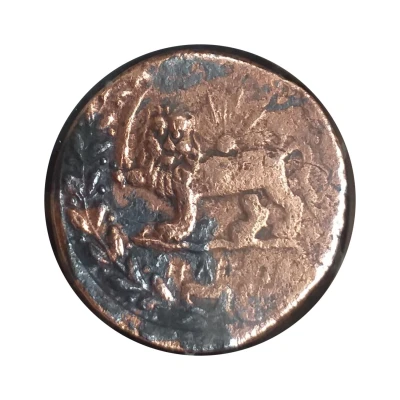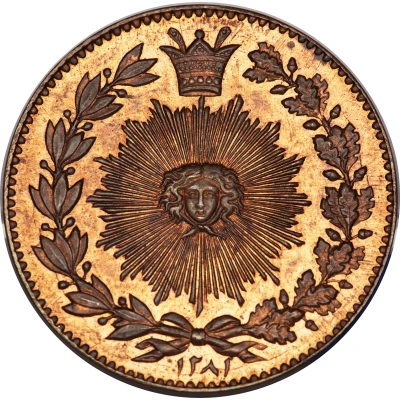


© سکه زنگی (CC BY-SA)
Falus - Nasir al-Din Shah Tehran
1283 (1867) year| Copper | 8 g | 23 mm |
| Issuer | Iran |
|---|---|
| Shah | Naser al-Din Shah (1848-1896) |
| Type | Standard circulation coin |
| Year | 1283 (1867) |
| Calendar | Islamic (Hijri) |
| Value | 1 Falus (0.050) |
| Currency | Qiran (1825-1932) |
| Composition | Copper |
| Weight | 8 g |
| Diameter | 23 mm |
| Thickness | 2 mm |
| Shape | Round (irregular) |
| Technique | Milled |
| Demonetized | Yes |
| Updated | 2024-10-05 |
| Numista | N#92386 |
|---|---|
| Rarity index | 90% |
Reverse
Lion brandishing sword left , in front of rising sun.
Script: Persian
Lettering: ۱۲۸۳
Comment
Notes: Different obverse design. Calligraphy on reverse is in Toghra style.
Interesting fact
One interesting fact about the Standard circulation coin Falus - Nasir al-Din Shah (Tehran) 1283 (1867) from Iran made of Copper weighing 8 g is that it features a unique blend of Islamic and European influences in its design. The coin's obverse side features a depiction of Nasir al-Din Shah, the Shah of Iran from 1848 to 1896, dressed in traditional Islamic attire, while the reverse side features a stylized representation of a lion, a common motif in European heraldry. This blending of cultural influences reflects the complex history and cultural exchange that occurred during the Qajar dynasty, which ruled Iran from 1789 to 1925.



